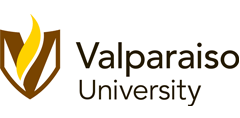
Document Type
Comparison and Contrast Essay
Publication Date
1994
Excerpt
Public prayer, throughout the nearly two millenia of Christianity's existence, has been an organized affair. The earliest accounts of Christian gatherings from the Acts of the Apostles testifies to this. After listening to the teachings of the Law in the Synagogue, the apostles and laity would gather in a home and celebrate the "agape," the "love feast" which is the Holy Eucharist. This simple format of Word and Meal remained at the heart of the Church's liturgy, even as the much more extravagant elaboration of the Middle Ages rendered it barely visible. With the advent of the Protestant movement, however, Christianity became divided and thus the liturgy became divided as well. Some Protestant groups, especially in the vein of Menno Simmon's Anabaptists and the like, sought a formless service of the Word and practically discarded the agape, save for once or twice a year. Martin Luther, on the other hand, found the Church's liturgy to be a rich resource and he valued it. Luther changed many facets of the liturgy which he found at the time to be questionable or even objectionable. Since the Second Vatican Council of the 1960's, however, the Catholic Church has largely returned its liturgy to these early Christian roots by instituting reforms which Luther would have undeniably approved of. While the two traditions have never really reconciled differences, ecumenical dialogue has revealed that much of the modern understanding of the liturgy and of the Eucharist itself is bringing them closer than ever before.
Recommended Citation
Fielding, Thomas, "Liturgies: Catholic and Lutheran Perspectives (1994)" (1994). The Valpo Core Reader. 280.
http://scholar.valpo.edu/core_reader/280
